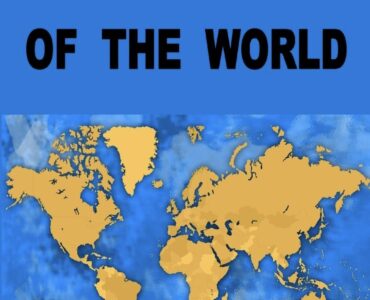
The Sultanate Era, 950–1500: Between The Abbasid Caliphate And The Gunpowder Empires
The collapse of the Abbasid empire in the tenth century opened the way for the further transformation of Middle Eastern regimes, societies, and cultures and for a new and creative, albeit tumultuous era in the history of the region. On the surface the political changes were anarchic. With the breakup of the Abbasid empire, provinces and even small districts came under the rule of new military elites. Nomadic peoples broke through the frontier defenses, invaded, and migrated en masse into the Middle East. Agricultural and trading economies were badly damaged, and the standard of living declined. Yet on a deeper level this period of upheaval was also an era of reconstruction. New forms of state and communal organizations were created and innovative variants of culture and identity were expressed, setting the foundations for the later Ottoman and Safavid empires.
The period 950–1500 fell into four phases. In the first phase (950–1050), local elites took control of the empire’s former provinces. In Egypt and Syria, the Fatimids, a Shii, rival of the Abbasids, came to power with their own claims to the caliphate. In Mesopotamia tribal forces, including the Hamdanid dynasty, seized control. Military adventurers from Daylam seized control of western Iran, much of Iraq, and Baghdad, which were the heartlands of the former caliphate. Eastern Iran and Transoxiana were ruled by the Samanids, a local landowning elite. They were partly supplanted by the Ghaznavids, a regime based on slave military forces, who for the first time selected their own sultan.
The second phase lasted from about 1040 to 1200, when the collapse of a unified central authority and the many regional power struggles allowed for the breakdown of the eastern Iranian frontiers against nomadic invasions. Already in the seventh century the T’ang rulers of China had closed their frontiers to Central Asian nomads, thus setting in motion a westward movement that would in the tenth, eleventh, and later centuries spill over into the Middle East. Inner Asian nomads searching for pasturage moved into the regions north of the Aral Sea and into Transoxiana and Afghanistan. From contact with settled peoples, trade, and the activity of missionaries, Turkish peoples began to convert to Islam, and their chieftains became tutored in the ways of agriculture, city administration, and trade, and knowledgeable about the imperial conception of rule and order. By the end of the tenth century the Qarakhanids, leaders of the Qarluq peoples, established their regime in Transoxiana, while the Oghuz peoples under the leadership of the Seljuk family went on to conquer much of the former Abbasid empire. The Seljuks took control of Khurasan in 1040; by 1055 they ruled over Baghdad. The migrations led to the formation of Seljuk offshoot states in Mesopotamia, Syria, and eventually Egypt. Turkish peoples also moved into lands that had not been under caliphal control, which brought Islamic dominion to parts of Armenia, Georgia, and Anatolia at the expense of the Byzantine Empire. An important Seljuk offshoot state established in Anatolia, the sultanate of Rum, was the direct ancestor of the Ottoman Empire. The Seljuk conquests lent but a temporary and superficial political unity to the Middle East. The conflicts of nomadic peoples seeking independence and ruling families wishing to subordinate the tribal forces, the rivalries among the members of ruling families for fiefdoms and independent territories, and the widespread distribution of iqtas (lands instead of salaries) led to an ever greater decentralization, fragmentation, and dispersal of political power. Seljuk-related regimes broke up into numerous independent states and tiny territorial fragments.
The Seljuk decline opened the way to a third phase in the history of the region, from about 1150 to 1350. This was a period of further nomadic invasion from inner Asia, culminating in the Mongol invasions and the establishment of Mongol regimes over much of the Middle East. In 1153 Ghuzz peoples destroyed the Seljuk regime in eastern Iran. They were followed by the Naymans and then the devastating Mongol invasions. The Ilkhanid Mongol regime in Iran (1256–1336), however, brought renewed stability and ushered in a brilliant period in Iran’s art and culture. To the west, the slave military forces in Egypt and Syria, the only holdouts against Mongol rule, consolidated the Mamluk regime (1250–1517).
The period after the collapse of the Abbasid caliphate in the tenth century led to the rise of new military elites, often of nomad origin. The Turco-Mongolian conqueror known as Timur or Tamerlane (d.1405) created a vast but ephemeral empire centered on his capital at Samarqand. The Gur-i Mir, his majestic blue-domed tomb there, epitomizes the splendor of Timurid architecture.
The final phase of this interregnum was the Timurid period in Transoxiana and Iran (1400–500). Mongol rule was succeeded by a new time of troubles and the extraordinary conquest of the Turkic conqueror Timur (known in English as Tamerlane, 1336–1405). Although Timurid rule left a number of unstable succession regimes, like Mongol rule it also promoted greatness in architecture, the arts, and the sciences. This era of repeated nomadic invasions brought profound demographic changes in the ethnic and religious identity of populations. A new Turkic-speaking population migrated into Transoxiana, the Hindu Kush mountain range, eastern and northwestern Iran, the Caucasus, Anatolia, and Mesopotamia. Large portions of this northern tier became Turkic-speaking. Turkish settlement led to the Islamization of parts of northeastern Iran, Armenia, and Anatolia, both from the settlement of newcomers and by the conversion of existing populations. Islam was also carried into Transoxiana and further parts of inner Asia and the northern steppes. Turkish migrations meant an expansion of the boundaries of Islamdom.
Ethnic changes also led to important ecological changes. In some regions the newcomers displaced former nomadic populations, as in Transoxiana and Mesopotamia. In other areas the Turkish migrations increased pastoralism at the expense of agriculture. Turkish tribal formations also became a lasting part of the political process. Under the leadership of warrior chieftains and holy men, the migrations shifted the balance of power in favor of tribes at the expense of centralized states. These conquests are interesting to compare with the Arab invasions of earlier centuries. Although in many ways the conquest process and the formation of new empires was much the same, there is one striking difference. The Arab conquests brought a new linguistic and religious identity to the Middle East that became the predominant identity of later Middle Eastern civilization, while the Turkish conquerors accepted Islam. While maintaining their Turkic language and identity, they became patrons of Arabo-Persian civilization.
The Sultanate Era, 950–1500: Between The Abbasid Caliphate And The Gunpowder Empires
803 – 016
https://discerninemg-islam.org
Last Updated: 04/2022
See COPYRIGHT information below.



